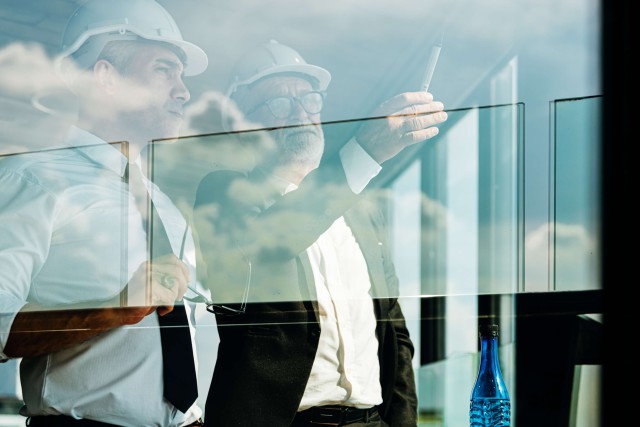
In April 2021, the UK government set out its aggressive goals to reduce carbon emissions 78% by 2035 compared to 1990 levels. COP26 was considered the most significant climate talks since the 2015 Paris agreement and the focus is now firmly on governments and businesses reaching these targets to help fight climate change. Michael Anderton of Johnson Controls looks at retrofit as part of the process.
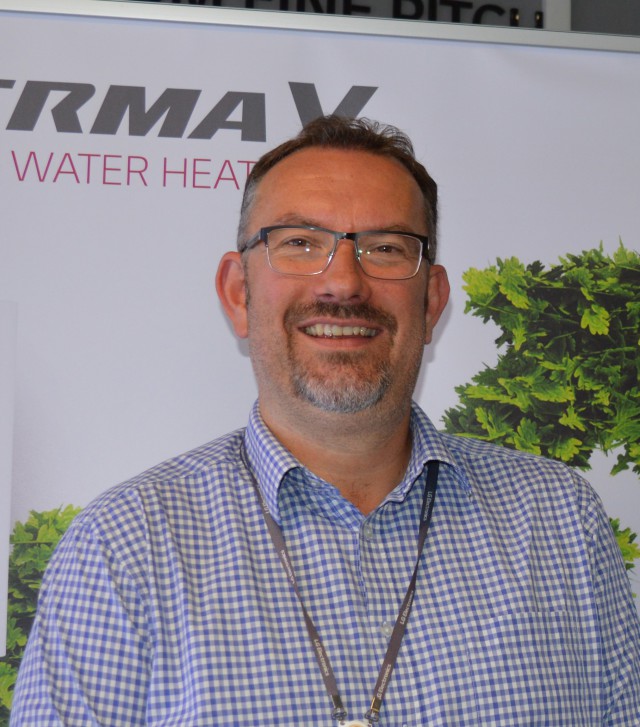
LG WELCOMES LATEST NEWS RE: GREEN HOMES GRANT
LG has greeted the latest news from Government regarding the Green Homes Grant positively with clarification received that the Grant can be used alongside the Domestic Renewable Heat Incentive (DRHI) as an upfront payment to provide an immediate offset for the capital cost of the heat pump, rather than having to wait for quarterly payments to cover this cost.

Government relying on limited data to create rural heat decarbonisation policy. says OFTEC
Government’s current reluctance to support renewable liquid fuels as part of the UK’s green heat agenda is based on flawed evidence, according to the initial outcomes of field trials.

Helping to reduce energy and carbon emissions at Thomas Rotherham College in South Yorkshire is a solar-thermal system supplied by Stokvis Energy Systems to provide hot water for staff and public toilets. The system for this college for 16- to 19-year olds is expected to achieve energy savings of 2.6 to 3 MWh a year.
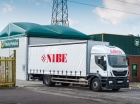
NIBE Energy Systems has significantly increased the distribution of renewable heating technologies with a new agreement with the Travis Perkins Group. In addition to the long-standing partnership with Plumbing Trade Supplies, NIBE’s full range of heat pumps, biomass boiler and solar-thermal systems will also be available from Travis Perkins, City Plumbing Supplies, Solfex Energy Systems and BSS outlets throughout the UK.

Bosch goes bigger in its CHP offering
Larger CHP units added to the range from Bosch Commercial & Industrial Heating extend the company’s offering to 19 to 400 kW of electrical output. The efficiency of the new units, which have electrical outputs of 365 and 400 kW can enable the initial investment to be repaid in as little as two years. The new models are compatible with primary and secondary exhaust-gas silencer to minimise noise levels during operation.
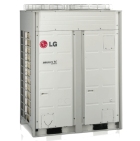
LG delivers step change in VRF air conditioning
LG’s latest VRF air-conditioning system, Multi V IV, can achieve a 40% improvement in integrated partial-load efficiency, compared with the previous-generation Multi V III, to achieve an EER of 6.0 compared with 4.3. There is also a 30% improvement in system efficiency to 4.85 compared with 3.73, based on a 20 hp unit in cooling-only mode. Four innovative technologies in the new range are responsible for these substantial improvements.

A Dimplex ground-source heat-pump system is providing low-carbon heating and passive cooling for a new building at SciTech Daresbury in Cheshire. Vanguard House, a 3600 m2 3-storey office and laboratory facility, was designed to achieve a BREEAM ‘Excellent’ rating and does not use any fossil fuels.

Metering energy leads to saving energy
With the latest revision to Part L of the Building Regulations set to come into effect, Chris Monson of Trend Control Systems, explains how sub-metering continues to play a vital role in increasing energy efficiency and why non-compliance represents a missed opportunity.
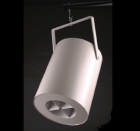
Thermal destratification takes on new elegance
Airius now offers a Designer version of its thermal destratification units. These units feature the same patented stator technology that is used in the company’s other energy-saving destratification fans.

Star chillers use HFO refrigerant and Turbocor compressor
HFO1234ze, which has a global-warming potential of just six, is the refrigerant used in Star Refrigeration’s latest range of Indigochillers. These chillers use Turbocor compressors to achieve very efficient and quiet operation.

Part L is just a starting point
Darren Finley of Ideal Commercial Boilers, looks at how the new Building Regulations and the demands of the forthcoming ErP will offer challenges and opportunities for manufacturers by creating demand for innovative solutions and giving them the chance to lead the way in intelligent product development, problem solving and new ways of sharing their expertise.

So what has changed in Part L 2013?
Now that the complete Part L 2013 has been published, what do the changes mean for the building services sector? Hywel Davies of CIBSE considers the 2013 updates.

Lighting efficiency versus luminaire efficiency
With Part L regulations taking effect in April, many want to know the most efficient way to be compliant. Dan Wills of Helvar talks us through the methods of calculating compliancy with Part L and the role that lighting control will play.

The new version of Part L of the Building Regulations was a missed opportunity to deliver the improved building performance the country needs, says Bob Towse of the Building & Engineering Services Association.
BSRIA and NHBC team up for airtightness testing
BSRIA and the National House Building Council are now working together to provide comprehensive compliance and energy-related service for house builders. Under the arrangement, BSRIA will supply all on-site airtightness testing services to NHBC clients.

GDL has designed, manufactured and installed a natural-ventilation solution for the Hessle Road Health Centre and Bransholme Health Centre in Hull, working with client East Yorkshire Glass. The development of the two health centres is part of a wider scheme to develop better facilities and to maximise existing facilities among 13 health centres in the region by Citycare on behalf of the NHS trust.
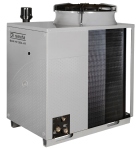
Remeha Commercial’s range of air-source gas absorption heat pumps is suitable for space heating in new commercial buildings, either with condensing boilers or in cascade operation. Fuel efficiency is around 144% (GCV), even at low ambient temperatures — resulting in significant reductions in operating costs and carbon emissions.

Heat pump features in ‘Grand designs’ winner
Terra Therma, which specialises in underfloor heating systems served by renewable energy scooped two of the top awards in Channel 4’s ‘Grand designs’ best new house of the year for 2013, Not only was Terra Therma involved with the winner, but also with the highly commended runner up. Director Mark O’Brien explains, ‘We provided the underfloor heating, Daikin air-source heat-pump fed heating and a hot-water system. We used modern press-fit plumbing components to provide an efficient and clean heating system that will require little or no annual maintenance.’
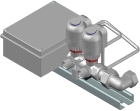
To facilitate compliance with the requirement for zoned heat in dwellings in Part L of the Building Regulations, SAV offers a 2-zone compliance kit. It comprises a 2-part manifold with integral zone valves, two actuators, a wiring box and related connections.

Recognising the benefits of controlled lighting
Alastair Ramsay of Legrand, discusses the impact expected updates to Part L of the Building Regulations focusing more attention on delivering opportunities for energy efficiency from lighting and controls.

Dorset council takes control of lighting costs
A high level of lighting control without the need for a control network is achieved in the new offices of West Dorset District Council using CP Electronics’ Vitesse Plus and Vitesse Modular systems. The council’s move to smaller and more energy-efficient offices called South Walks in Dorchester has helped the council reduce its running costs and impact on the environment.

Mitsubishi adds to the potential of heat pumps
Mitsubishi Electric’s range of Ecodan air-source heat pumps includes three split air-to-water systems with capacities of 4, 7.5 and 12 kW. They can be cascaded to deliver up to 72 kW of controllable heating, making them suitable for multi-use premises such as blocks of flats, light commercial situations and also bringing the possibility of renewable heating to larger homes.

Chris Goggin of Rinnai expresses his disappointment that Building Regulations will not require retrofit water heating in existing buildings to be as efficient as in new build.

Tracing the continuing development of Part L
The current Building Regulations were laid in 2010, and include Part L, ‘Conservation of fuel and power’, supported by four approved documents giving guidance on how to comply with the regulations, as well as two compliance guides. But Part L was once a simpler creation. Hywel Davies of CIBSE explains the history.

Ecobat Battery re-launches as Veloris
Following its sale from the Ecobat Group and a subsequent comprehensive review of its position in and value to the market, Europe’s largest independent battery distributor is now Veloris.
Baxi survey reveals care home leaders need support to achieve heat decarbonisation goals
Baxi recently surveyed over 400 senior and middle management care home managers in both the private and public sector this summer in an effort to understand the enablers required to help decarbonise the sector.






